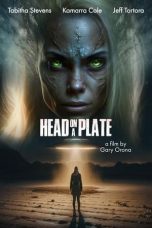- Source: Stirling (council area)
The Stirling council area (Scots: Stirlin; Scottish Gaelic: Sruighlea) is one of the 32 council areas of Scotland, and has an estimated population of 92,530 (2022). It was created in 1975 as a lower-tier district within the Central region. The district covered parts of the historic counties of Stirlingshire and Perthshire, which were abolished for local government purposes. In 1996 the Central region was abolished and Stirling Council took over all local government functions within the area.
The administrative centre of the area is the city of Stirling, with the headquarters at Old Viewforth.
The area borders the council areas of Clackmannanshire (to the east), North Lanarkshire (to the south), Falkirk (to the south east), Perth and Kinross (to the north and north east), Argyll and Bute (to the north and north west), and both East and West Dunbartonshire to Stirling's southwest.
The majority of the population of the area is located in its southeast corner, in the city of Stirling and in the surrounding lowland communities: Bridge of Allan and Dunblane to the north, Bannockburn to the immediate south, and the three former coal mining communities of Cowie, Fallin, and Plean, known collectively as the "Eastern Villages".
The rest of the council area's population is sparsely distributed across the rural, mainly highland, expanse in the north and west of the area. The southern half of this rural area comprises the flat western floodplain of the River Forth, bounded on the south by the Touch Hills and the Campsie Fells. North of the glen lie the Trossachs mountains, and the northern half of the council area is generally mountainous in character.
History
Stirling district was created in 1975 under the Local Government (Scotland) Act 1973, which abolished Scotland's counties, burghs and landward districts and replaced them with upper-tier regions and lower-tier districts. Stirling was one of three districts within the Central region. As created in 1975 the Stirling district covered five districts from Stirlingshire and four districts from Perthshire, which were all abolished at the same time:
From Perthshire:
Callander Burgh
Doune Burgh
Dunblane Burgh
Western District, except Ardoch (which went to Perth and Kinross)
From Stirlingshire:
Bridge of Allan Burgh
Central No. 1 District
Stirling Burgh
Western No. 1 District
Western No. 2 District
The new district and its neighbour Falkirk were together made a new Stirling and Falkirk lieutenancy area. The last Lord Lieutenant of Stirlingshire became the first Lord Lieutenant of Stirling and Falkirk.
Local government was reformed again in 1996 under the Local Government etc. (Scotland) Act 1994, which abolished the regions and districts which had been created in 1975, replacing them with unitary council areas. Central Region was abolished and each of the area's three districts, including Stirling, became council areas. Stirling District Council was therefore replaced by the current Stirling Council.
Governance
= Political control
=The council has been under no overall control since 2007. Following the 2022 election a minority Labour administration formed to run the council.
The first election to Stirling District Council was held in 1974, initially operating as a shadow authority alongside the outgoing authorities until the new system came into force on 16 May 1975. A shadow authority was again elected in 1995 ahead of the change to council areas which came into force on 1 April 1996. Political control since 1975 has been as follows:
Stirling District Council
Stirling Council
= Leadership
=The first leader of the council, Corrie McChord, had been the last leader of the Central Regional Council. The leaders since 1996 have been:
= Composition
=Following the 2022 election and subsequent by-elections and changes of allegiance up to July 2024, the composition of the council was:
A by-election was held in 15 August 2024 to fill a vacancy caused by Chris Kane being elected as MP for Stirling and Strathallan. Following his election, Labour Councillor Margaret Brisley became leader of the Council, but died on 27 October 2024, and a by-election will be held to fill the vacancy caused by her death. The next full council election is due in 2027.
= Premises
=The council is based at Old Viewforth on Pitt Terrace in Stirling. The oldest part of the building is a converted house called Viewforth, which had been built in 1855. The house was bought by Stirlingshire County Council in 1931 for £5,250 and converted to become its headquarters. A large art deco extension was added to the rear of the house, opening in 1937. A new building called New Viewforth was built alongside the older premises in 1972, shortly before Stirlingshire County Council was abolished.
Between 1975 and 1996 the premises at Viewforth served as the headquarters of Central Regional Council, whilst Stirling District Council was based at the Municipal Buildings at 8–10 Corn Exchange Road in Stirling, which had been completed in 1918 for the old Stirling Town Council. On local government reorganisation in 1996 Stirling Council took over Viewforth. The 1972 building known as New Viewforth was demolished in 2014.
Elections
Since 2007 elections have been held every five years under the single transferable vote system, introduced by the Local Governance (Scotland) Act 2004. Election results since 1995 have been as follows:
= Wards
=The wards are:
Communities
The area is divided into 42 community council areas, all of which have community councils as at 2023.
Settlements
As well as the city of Stirling itself, there are many towns, villages and hamlets spread across the council area, as well as dispersed settlements.
Largest settlements by population:
= Towns
=Bannockburn
Bridge of Allan
Callander
Doune
Dunblane
= Villages
=Aberfoyle
Ashfield
Balfron
Balmaha
Balquhidder
Blairlogie
Blanefield
Buchlyvie
Cambusbarron
Cambuskenneth
Cowie
Crianlarich
Croftamie
Deanston
Drymen
Fallin
Fintry
Gargunnock
Gartmore
Killearn
Killin
Kinlochard
Kippen
Milton of Buchanan
Lochearnhead
Plean
Port of Menteith
Strathblane
Strathyre
Thornhill
Throsk
Tyndrum
= Hamlets
=Ardchullarie More
Ardeonaig
Arnprior
Auchlyne
Balfron Station
Boquhan
Buchanan Smithy
Carbeth
Dumgoyne
Gartness
Inverarnan
Kilmahog
Kinbuck
Milton
Mugdock
Stronachlachar
= Dispersed settlements
=Ardchyle
Auchtubh
Blair Drummond
Brig o' Turk
Dalmary
Dalrigh
Inversnaid
Rowardennan
Ruskie
Places of interest
Carse of Lecropt
Culcreuch Castle
Inchmahome Priory (a ruined Augustinian priory on an island in the Lake of Menteith, used as a refuge in 1547 by Mary, Queen of Scots)
Breadalbane Folklore Centre
Cambuskenneth Abbey (formerly the seat of the Scottish Parliament)
Doune Castle
Dunblane Cathedral
Falls of Dochart
Falls of Lochay
Glen Dochart
Glenfinlas
Lake of Menteith
Lecropt Kirk
Loch Achray
Loch Ard
Loch Earn
Loch Lomond and the Trossachs National Park
Loch Katrine (The source of most of the drinking water for the city of Glasgow)
Loch Rusky
Loch Venachar
Moirlannich Longhouse
Queen Elizabeth Forest Park (run by Forestry and Land Scotland)
Scottish Institute of Sport (on the grounds of Stirling University)
Stirling Castle
The University of Stirling
The Trossachs
Wallace Monument
West Highland Way
References
External links
Stirling Council official website
Kata Kunci Pencarian:
- Stirling (wilayah dewan)
- North Lanarkshire
- East Dunbartonshire
- Perth and Kinross
- ISO 3166-2:GB
- Daftar kota di Britania Raya
- Argyll and Bute
- Universitas Seni Norwich
- Skotlandia
- Makna kehidupan
- Stirling (council area)
- Stirling
- David Stirling
- University of Stirling
- Archie Stirling
- Stirling Castle
- Thornhill, Stirling
- Battle of Stirling Bridge
- Aberfoyle, Stirling
- Stirling (UK Parliament constituency)
- 1
- 2
Siege (Asedio) (2023)
My Neighbor Totoro (1988)
Princess Mononoke (1997)
Indiana Jones and the Kingdom of the Crystal Skull (2008)
Prisoners (2013)
No More Posts Available.
No more pages to load.














